More On: Catholic
Former President Donald Trump was seen outside Trump Tower on Tuesday as he wrapped up his first trip to New York City since exiting the White House
How Donald Trump and Conservative Catholics Formed a Far-Right Alliance
In VOA Nominee Fight, Washington Post Insists Christians Can No Longer Hold Public Office
Catholic Group Launches $9.7 Million Anti-Biden Campaign in Battleground States
Pope Francis: Sex and eating are ‘divine’ pleasures sent by God
It’s hard out here for a pope. See, when it comes to religious history, the list of Catholic Church transgressions makes for pretty uncomfortable reading. Despite exalting virtue and kindness in its teaching, church leadership has spearheaded a long history of outright unforgivable Catholic actions. You might remember some of these improprieties from school – the Inquisition, Joan of Arc, …
It’s hard out here for a pope. See, when it comes to religious history, the list of Catholic Church transgressions makes for pretty uncomfortable reading. Despite exalting virtue and kindness in its teaching, church leadership has spearheaded a long history of outright unforgivable Catholic actions.
You might remember some of these improprieties from school – the Inquisition, Joan of Arc, and the trial of Galileo should all ring a bell. But not everything here is medieval. Though Vatican violence goes way back, a number of disturbing episodes are from recent history. Some of this repugnant behavior comes from popes, some was church-endorsed, and some, most unsettlingly, was just straight-up regular church practice.
Dark church history contains scandal after scandal rife with every vice and taboo you can imagine. When the church was at the height of its power (at which point it was the most powerful organization in the Western world), it’s safe to say everything went to its head. Combine that with church leaders seeming to stubbornly resist adapting to changing morality and you’ve got a whole lot of unforgivable moments on your hands.
Systemically Covering Up Tens Of Thousands Of Cases Involving Sexual Misconduct

Remember the time there was a systematic cover up of abuse, molestation, and rape at the hands of priests that went all the way to the top of the church? Conservative estimates say there were 17,200 victims in the US alone, and this type of mistreatment happened worldwide. When complaints came in, priests and other offenders were transferred rather than punished. The extent of their actions will probably never be fully understood because of the decades of cover-up.
But the church isn’t denying it anymore. The archdiocese of Milwaukee acknowledged the severity of the issue and agreed to pay a $21 million settlement to 300 victims. But these types of settlements are few and far between. Luckily, Pope Francis has set up a tribunal to hold the bishops who facilitated the cover up to account. The molestation of children is still happening at the hands of priests 15 years after The Boston Globe broke the story.
In fact, in August 2018, a grand jury reported that internal documents from six Pennsylvanian dioceses noted that over 300 “predator priests” were “credibly accused” (a seemingly subjective accusation acknowledgment based on the discretion of individual dioceses) of harming more than 1,000 child victims; the alleged violations go as far back as 1947. Due to the statute of limitations, only two priests were charged with abusing minors.
In February 2019, however, Pope Francis publicly acknowledged the systemic maltreatment and vowed to combat the problem. He said, “I think that it’s continuing because it’s not like once you realize it that it stops. It continues. And for some time we’ve been working on it.”
The International Union of Superiors General has used the uprising of the #MeToo movement to denounce the “culture of silence and secrecy.” With the support of Pope Francis and the pushback from the community of international female superiors, the Catholic Church claims to be “working on” overcoming the years of sexual mistreatment by persons in power.
Terrorizing Jews And Muslims For 300 Years
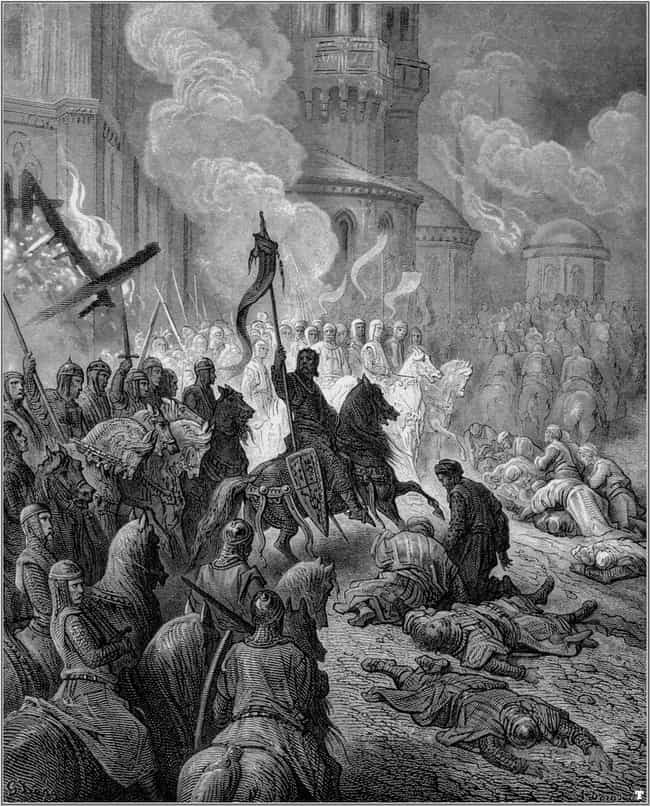
In 1095, when Pope Urban II made a plea for war with Muslims, armies of Christians in Western Europe took up the charge. The pope promised serfs freedom if they went, galvanizing the masses. In the First Crusade, an army of peasants led by Peter the Hermit was massacred by the Turks. When an army of knights went after them and captured Jerusalem, it was said they slaughtered Muslims until the streets ran with blood.
This was only the beginning. Waves of the Crusades continued until 1396, marking three centuries of warfare and incalculable human suffering. Catholics definitely weren’t the only religion involved in this mass violence, but Pope Urban II got the ball rolling. Here’s a nice juicy summary of the sordid catastrophe:
Taking the heads of slain enemies and impaling them upon pikes appears to have been a favorite pastime among crusaders. Chronicles record a story of a crusader-bishop who referred to the impaled heads of slain Muslims as a joyful spectacle for the people of God. When Muslim cities were captured by Christian crusaders, it was standard operating procedure for all inhabitants, no matter what their age, to be summarily killed. It is not an exaggeration to say that the streets ran red with blood as Christians reveled in church-sanctioned horrors. Jews who took refuge in their synagogues would be burned alive, not unlike the treatment they received in Europe.
Burning Joan Of Arc For Dressing Like A Man
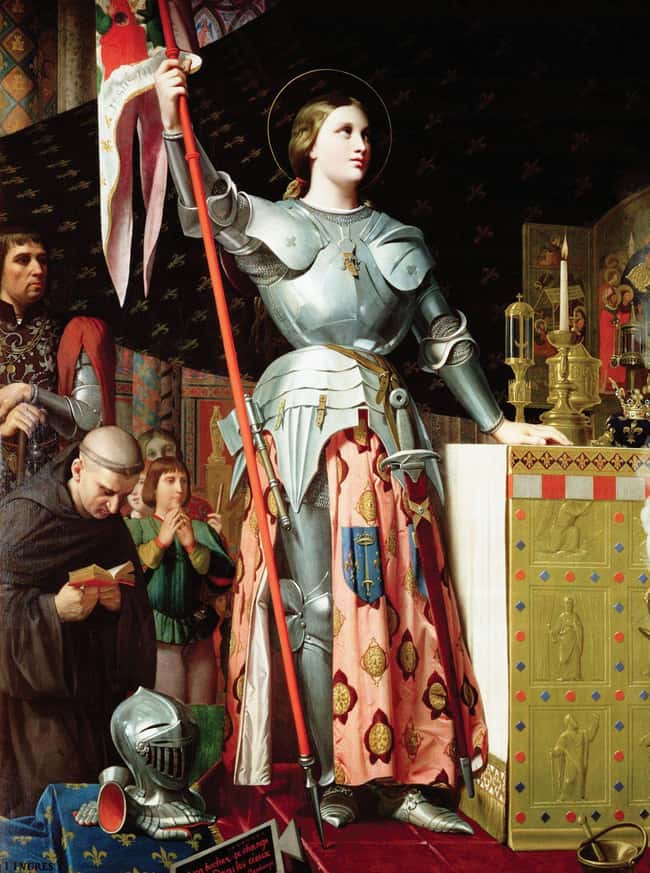
You may know Joan of Arc as a saint, but the church didn’t always hold her in such high esteem. In fact, at one time, she was pretty much the Catholic Church’s public enemy No. 1.
In 1429, 17-year-old Joan of Arc, believing God had spoken to her, instigated an uprising to get the English out of France, but some high-powered Catholics who sympathized with the English weren’t pleased. French king Charles VII wisely accepted Joan’s help in his fight against the English, and together, they won some major battles.
When Joan was captured, Charles VII, unsure of whether he trusted her as an emissary of God, handed her over to the church, which did what Catholics do best – put her on trial for heresy with no evidence. To make things one step more ridiculous, Joan was denied counsel, which was against church rules. Despite this, she is famed for remaining cool, calm, and dripping with integrity throughout the trial.
Because there was no evidence of heresy, Joan was found guilty of one of the 70+ other charges brought against her – wearing men’s clothes – for which she was burned at the stake in 1431 in front of a crowd of thousands. The church was determined to get her, and it did.
In 1456, Charles VII ordered an investigation into Joan’s trial. The result? She was declared innocent and made a martyr. The church followed suit and, in 1920, canonized her. Talk about a change of heart. Maybe since all male church officials wear dress-like robes, they decided it was okay for Joan to dress like a man.
Imprisoning Galileo In His Home For Years Because He Suggested Science Was Greater Than God
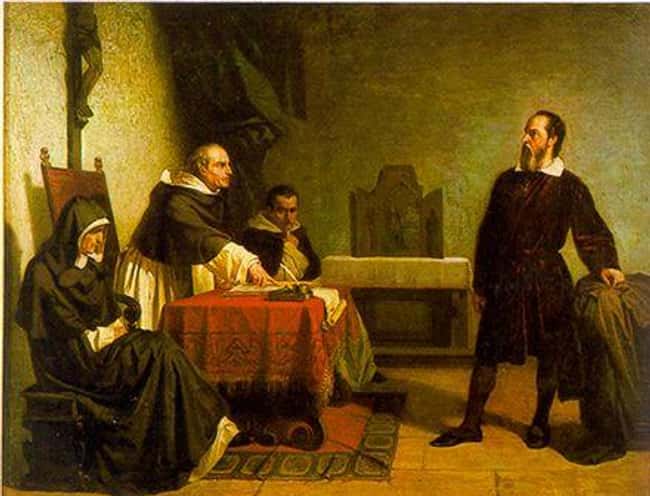
The church and science have a complicated relationship, to put it nicely. In 1633, Galileo Galilei, the father of, like, all science, was put on trial by the church for saying the sun is the center of the universe and the Earth moves around it, rather than the other way around. Which is, you know, true for the most part (sure, okay, the sun isn’t the center of the universe, but still, he was onto something). But that didn’t matter.
Pope Urban VIII was having none of it, seeing Galileo’s statement as horrific heresy. So, 10 cardinals sat in judgment of Galileo, who was threatened with torture, imprisonment, and even being burned at the stake. Galileo, 69 at the time and in a “pitiable state of bodily indisposition,” eventually renounced his beliefs. Because of this, the church went easy on him and, rather than torture, he was subjected to house arrest until he passed. What a way to treat the father of modern of science.
And what does the church have to say on the subject now? “We today know that Galileo was right in adopting the Copernican astronomical theory,” Cardinal Paul Poupard, the head of an investigation into the matter, said in 1992. So, only 350 years too late.
The Joust Of Whores Organized By Pope Alexander VI

The Joust of Whores is just one example of the corrupt and ridiculous popes of yore. In 1501, Pope Alexander VI (a Borgia, if that rings any bells), who was known to have some pretty refined hobbies, like watching horses fornicate, took things way over the top. According to historian Tony Perrottet, he invited 50 women to strip at the pope’s table. Then things got weird.
As Perrotet writes, “Alexander and his family gleefully threw chestnuts on the floor, forcing the women to grovel around their feet like swine; they then offered prizes of fine clothes and jewelry for the man who could fornicate with the most women.”
It’s rumored Alexander VI was slain by his son, Cesar. Just to show how truly vile Alexander was, his body was expelled from the basilica of Saint Peter. Why? He was considered too evil for sacred soil.
Burning Someone 43 Years After He Passed Because He Upset Some Important Catholics
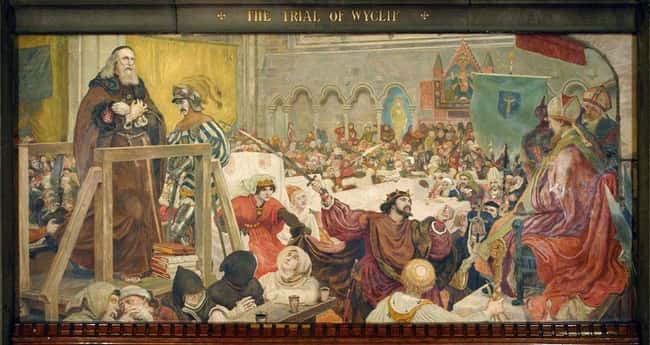
As if having your enemies slain wasn’t enough, Catholics have burn the corpses, too. What gives? Trying to outdo what the Romans did to JC?
John Wycliffe (1320-1384), famous English theologian and vocal critic of the church, was a forerunner of the Reformation. Among his many criticisms was a belief the church should give up its worldly possessions. As you can imagine, this wasn’t an idea the church was happy to have spread around. Wycliffe also promoted and worked on the first English translation of the Bible, hoping to give people direct access to the word of God. Again, not a fun idea for the church, which liked its monopoly on power.
William Courtenay, Archbishop of Canterbury, made moves against Wycliffe after retiring (gotta stay busy). Wycliffe’s writings were banned in certain areas, but it didn’t end there. It didn’t even end when Wycliffe perished of a stroke in 1384. Instead, in 1415 (31 years after he passed), the Council of Constance declared Wycliffe a heretic. Not only did they order his books burned, but they also ordered his body exhumed and burned. And it took them 12 years to do that. So, 43 years after Wycliffe passed, his corpse was torched and his ashes thrown in the River Swift. So much for resting in peace.
The Roman Inquisition, During Which Judaism And Love Magic Were Serious Crimes
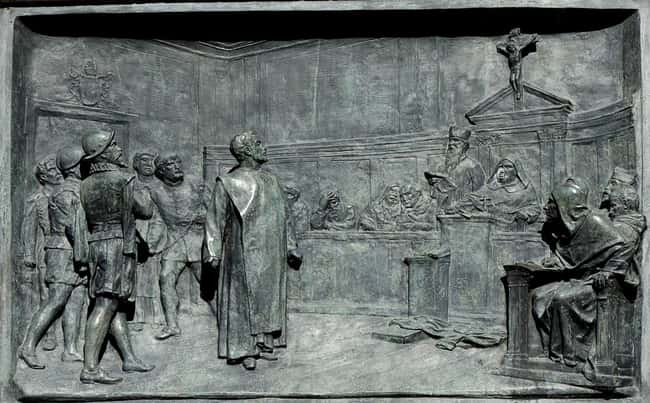
The level of the church’s involvement in various inquisitions can be argued. It’s important to remember Pope Innocent IV (ironic name, that) explicitly condoned torture as an Inquisition interrogation technique in his papal bull Ad extirpanda in 1252 (which probably deserves its own place on this list). The Spanish Inquisition, the most famous of these tribunals, was carried out by Spanish royalty and friars, who were Catholic but not working directly for, or under direction of, the Vatican.
But wait, kids! Don’t forget the Roman Inquisition, or the Supreme Sacred Congregation of the Roman and Universal Inquisition, which was 100% the church’s doing. In 1542, as part of a counter-Reformation against Protestantism (seriously, didn’t these people have anything better to do than overreact to other Christians who pissed them off?), the Spanish Inquisition’s gentle cousin, the Roman Inquisition, was born. Galileo and Copernicus were among those questioned. While church staple heresy was a popular dish during the Inquisition, the menu had a number of other options, including blasphemy, Judaism (which is a crime how?), immorality, witchcraft, love magic (yes, please), and anything else wrathful papists could shoe-horn in.
John Bargrave, a contemporary English writer, described how he was questioned in Latin (rather than Italian) to prevent uneducated guards from understanding what was being said. He was also prevented from carrying books “printed at any heretical city, as Geneva, Amsterdam, Leyden, London, or the like.”
Not as bad as the Spanish Inquisition, sure, but very much related and equally dogmatic, close-minded, and power-mongering. A church specialty. Bonne mort, frères et sœurs.
Orchestrating The Fall Of The Knights Templar To Appease A Broke King
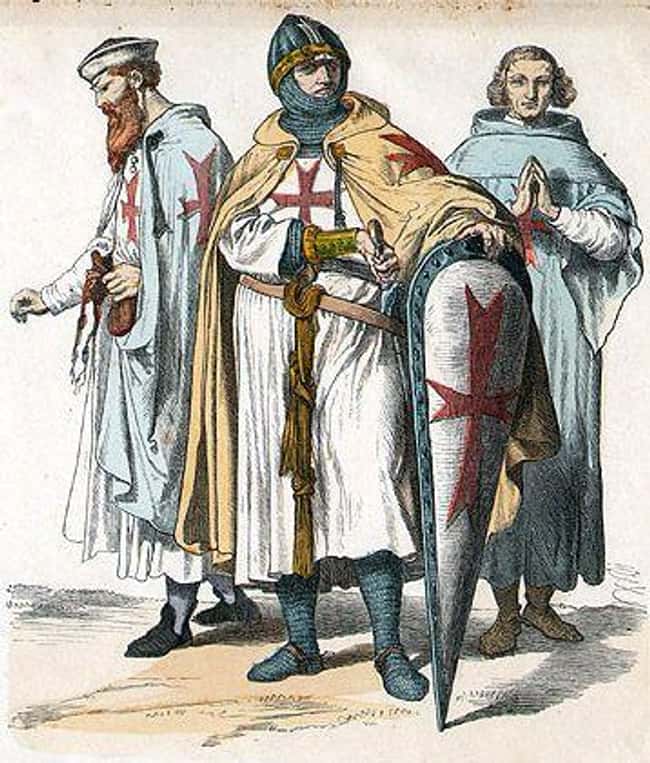
Made famous again by The Da Vinci Code, the Knights Templar, a stateless military fraternity assembled to protect Christian pilgrims on their way to the Holy Land, were the subject of gossip a long time ago. They were endorsed by the Roman Catholic Church in 1129, and were a famous valorous service in the Crusades. They were also really good with money, which shouldn’t have been a problem, but King Philip IV of France owed them (and others) a whole lot of it. Philip took advantage of growing fear of the Knights Templar’s power and pressured the church into dropping the mighty anvil of God down on them.
What the church did next wasn’t great. In 1307, Pope Clement V had members arrested and tortured, gaining false confessions of heresy. In fact, he got enough such confessions to justify disbanding the order in 1312. Various knights confessed to spitting on the cross, fraud, and secrecy (which was apparently a crime?), and nobody cared the confessions arose from torture and were recanted afterward. Archbishop of Sens Philippe de Marigny, who ran an investigation into the Knights Templar, had dozens burned at the stake. A fine repayment for all of that fighting in the Crusades.
In 2007, a secret document showing that Pope Clement V absolved the Knights Templar before later deciding to disband them was published. Historians believe this document provides essential proof that the church caved under King Phillip’s pressure. Good news for the knights’ integrity; bad news for the church’s.
Slaying Countless Women As Witches Because Pope Innocent VII Was Paranoid
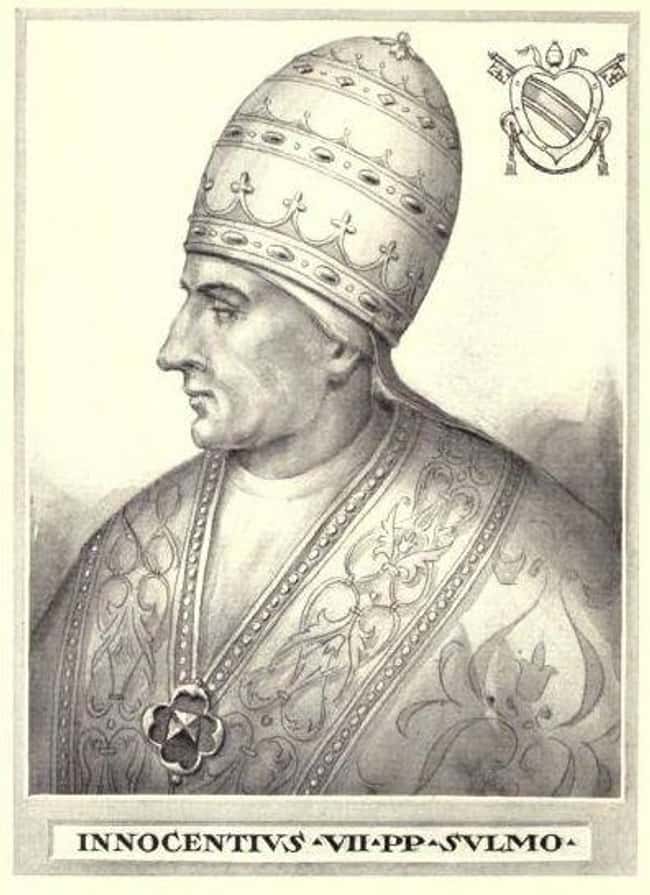
The Catholic Church wasn’t the only group involved in witch hunts, but it kicked things off with Malleus Maleficarum (Hammer of Witches), a doozy of a book written in 1487 after Pope Innocent VIII declared, by papal bull, that witches were real and a threat (due to their involvement with Satan). He wanted that sh*t investigated stat, so clergymen Johann Sprenger and Heinrich Krämer (using his Latin name, Henricus Institoris) took up the call and literally wrote the book on witches, Satanists (which were invented for this book), and hunts thereof. And boy, was it a success. It was so popular that, for 200 years, it was second only to the Bible on the sales charts.
The problem? Well, for one, the book was hugely sexist and focused almost only on women, promoting burning them at the stake, a common punishment for heretics. So who knows how many deaths it inspired; its influence was too huge to quantify. The book is also filled with somewhat dubious information, such as the following facts about witches and Satanists: They stop cows from giving milk, they ride through the air on broomsticks on their way to forest orgies, and they eat infants.
Pope Pius XII Denying Eyewitness Reports Of Mass Execution During The Holocaust
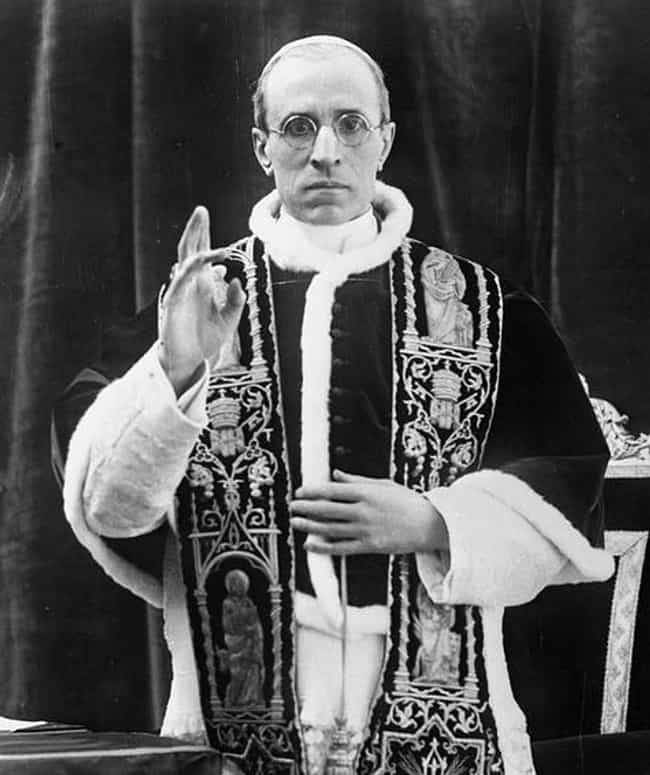
Pope Pius XII is widely criticized for refusing to publicly condemn the Nazi party – though there have been contradictory reports as to whether the pope “placed the papacy’s supremacy above the plight of Europe’s Jews” or was attempting to “prevent German retaliation and ensure the continued success of the Catholic Church’s behind-the-scenes efforts to aid victims of persecution.” Early in 2020, however, documents related to the pope’s wartime activities, previously held in the Vatican Archives, were unsealed, and they suggest that Pius learned of the mass executions of the Jewish people in the fall of 1942. According to historians studying the documents, an adviser dismissed the reports as exaggerated, prompting the pope to tell the US that “the Vatican was unable to confirm the crimes.”
The new evidence, detailed in the German weekly Die Ziet, reiterates that in September 1942, Pius’s assistant, the future Pope Paul VI, received an eyewitness report of Jews being persecuted in Warsaw. According to Haaratz, in August 1942, Ukrainian Archbishop Andrzej Szeptycki also informed the Vatican of persecution being carried out in the Lvov ghetto.






















